






Classification: Human-Fish Hybrid

All sailors claim to have seen at least one during their time at sea—a woman with long, beautiful hair; a sweet, lilting voice; and a tail covered in glittering scales. Mermaids are half-woman, half-fish, and undoubtedly among the most famous creatures of the sea.
You may see one sitting on the rocks by the shore sometime, maybe admiring herself in a mirror (where did she get it? Try to be patient: the secrets of her many trinkets will soon be revealed to you as well!), or she could appear at sea to passing ships, with a smile for the crews. Mermaids are not the slightest bit shy; but be careful: a formidable character lies behind her pretty face, and if they ever feel that they’ve been insulted (it doesn’t take much, as they’re quite touchy), they’ll take immediate revenge, luring ships straight onto submerged ridges.
This is why ancient ships used to have a figurehead (the wooden ornament that decorated the bow) in the shape of a mermaid: the crew hoped such a vain creature would never sink a ship with her own face on the front! What a clever idea!
The large fin helps her move around quicĸly. With a quicĸ flicĸ, she can disappear into the deep blue sea.
Mermaids don’t wear clips in their hair (the water would ruin them): they use shells and starfishes instead.

A mermaid’s tail has many colors: red, blue, green. . . .
Mermaids are fascinated with objects from the human world and are often tempted to approach humans to get their hands on one. They’re such incurable collectors! If something precious falls from a ship into the sea, they scoop it up and take it straight back to their cave, to be hoarded with all the other treasures they’ve come across.
But don’t be too anxious to give chase! You could be sorely disappointed—because while all mermaids think everything shiny is valuable, it may just be a boring old fork to you!
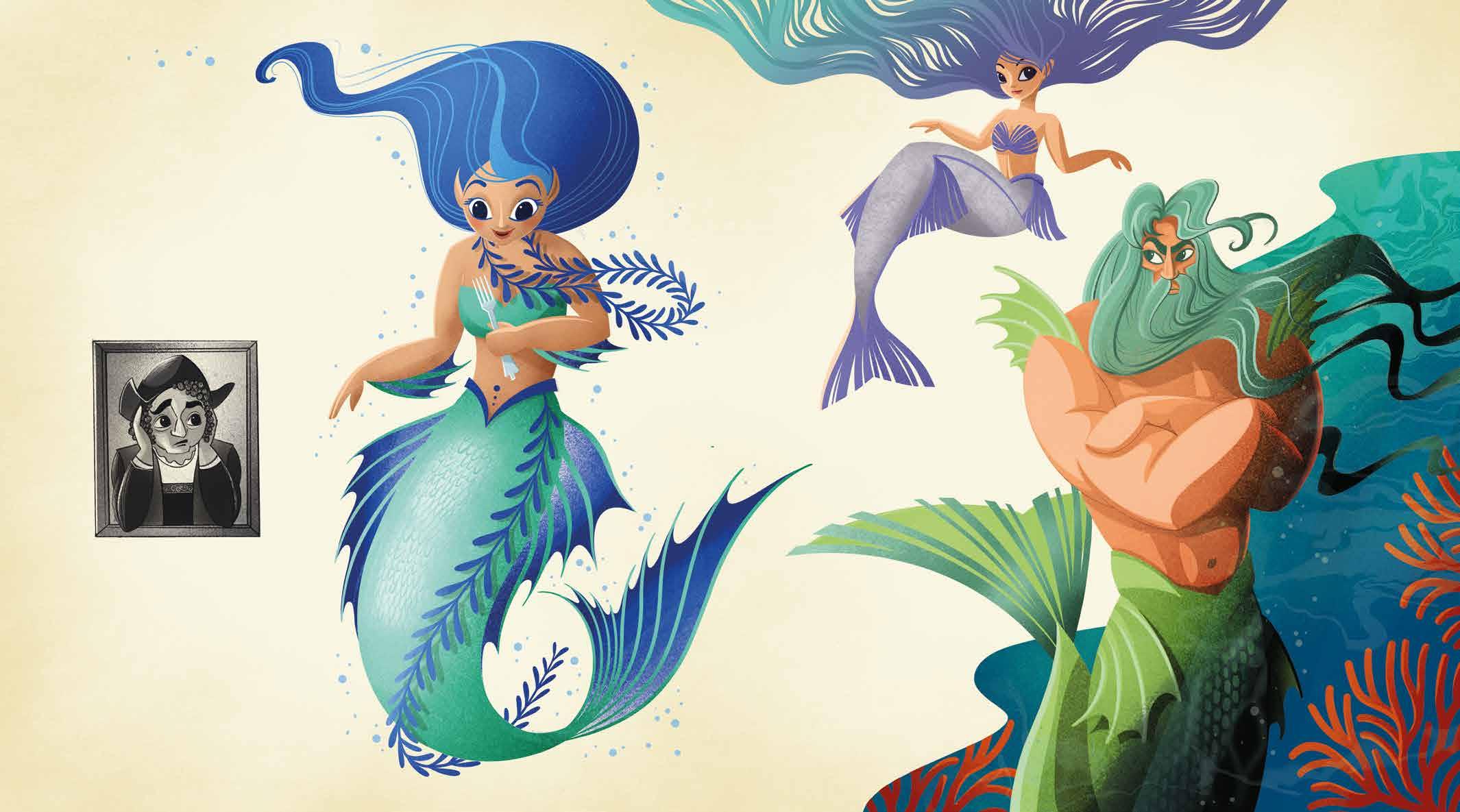
Put your fingers in your ears right away (or wear earphones and turn your favorite music up loud), because a mermaid’s most lethal weapon is her spellbinding song, which she uses to attract ships and then make them sink!
Christopher Columbus also wrote in his diaries that he’d seen a mermaid.
The male equivalent to a mermaid is a Triton (not a merman!).

There’s a mermaid with the tail of a salmon in the sea off Scotland, and it’s said that she would grant three wishes for her release if she is ever captured (although I’d thinĸ twice about getting tangled up with her in the first place!).
Classification: Horse-Fish Hybrid

Lots of my friends love ponies, but I’d much rather ride a hippocampus any day!
Hippocampi (often called sea horses) are half-horse, half-fish, and are the loyal steeds of mermaids and tritons, the only ones able to mount them. They grab onto the animal’s neck and wrap their tails around the hippocampus’s tail.
There are numerous stories of how Poseidon, god of the sea according to the Greeks, drove a chariot drawn by beautiful hippocampi through the seven seas.
Hippocampi are obviously sea creatures, but don’t forget that indomitable spirit of a horse. If you force a hippocampus to stop, it will snort and kick until you let it go again (admit it, you do the same when you’re bored!).
What do hippocampi love most? To roam freely in the ocean depths, past coral reefs and shoals of fish. And yes, they spray sea foam everywhere, but what a lot of fun they have doing it!
Watch out for the tail: liĸe horses, they whip them fast!
Their mane is a tangle of seaweed and coral.

Their webbed feet help them move quicĸly through the water.
Classification: Horse-Fish Hybrid

Don’t be taken in by an Aughisky’s looks (yes: this time, appearances are definitely deceiving!).
It might look like a magnificent black horse, but it’s actually a very dangerous sea creature.
The Aughisky usually trots from beach to beach, appearing kind and good-natured enough to persuade unsuspecting passersby to climb on. That’s when it reveals its true nature, taking off at full speed for the sea, dragging its poor victim in with it.
Don’t fall for it, okay? Keep away.
And be careful about the people around you. The Aughisky can also shapeshift into a human to hoodwink you! Luckily, when it does transform, it always seems to forget a minor detail, like its horses’ hooves or seaweed in its hair. So keep your eyes peeled and it won’t fool you!
When mounted, the Aughisĸy’s blacĸ coat turns as sticĸy as glue, trapping the unlucĸy rider who can’t get away.

To control an Aughisĸy, you need to hold tightly to the reins. I ĸnow, that’s easier said than done!
Classification: Humanoid
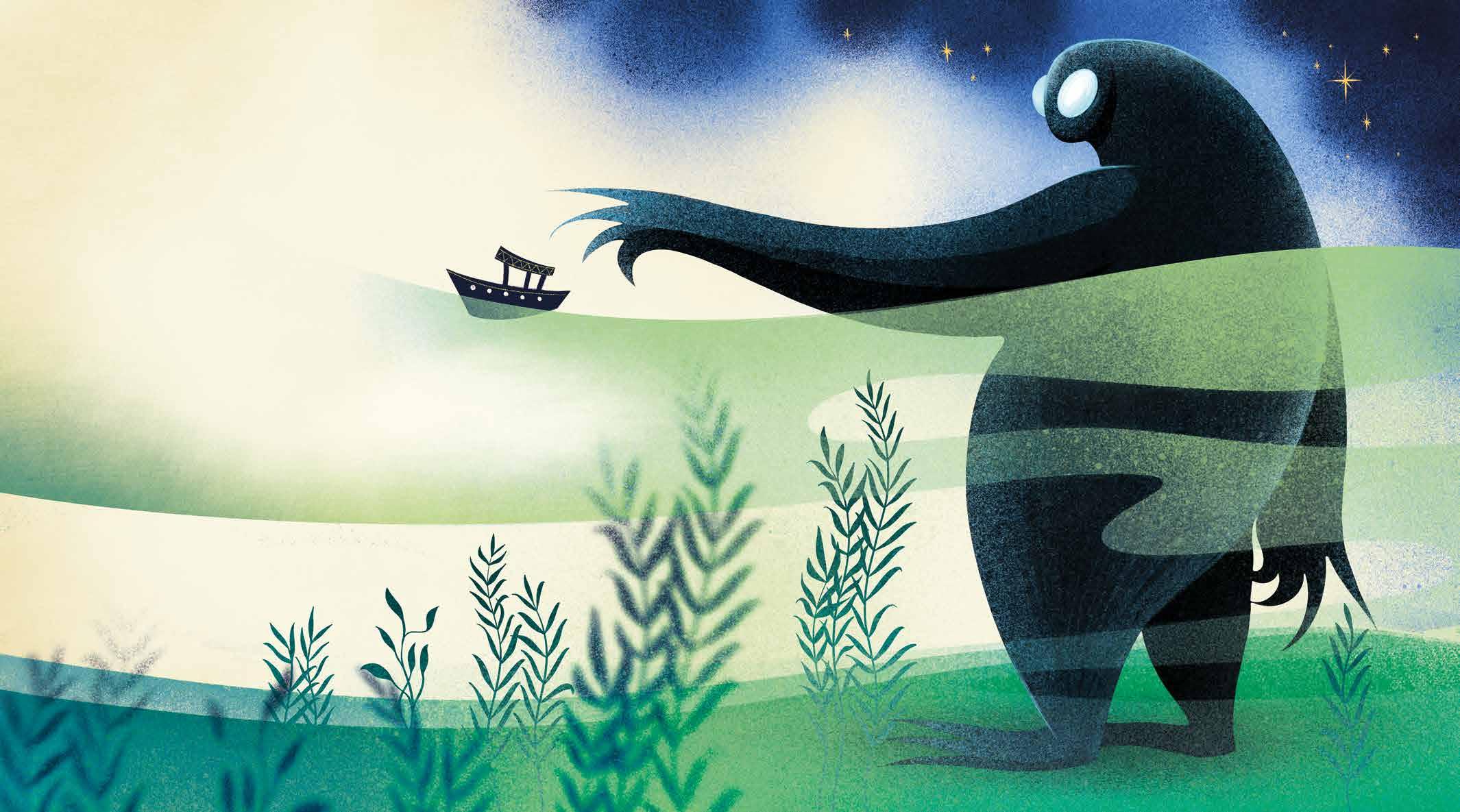
This is what usually happens: the sea will be as smooth and sheer as a mirror, there’ll be a mere whisper of a breeze while everything else is silent, and into that calm the Umibozu will erupt!
Yes, literally!
Umibozus very rarely emerge from the abyss; and when they do, it’s only ever at night. They prefer to be seen as little as possible. For whatever reason, Umibozus keep to themselves and want nothing to do with the other sea creatures—and less still with humans!
Their hands are almost always ĸept hidden underwater, yet countless sailors swear they have long tentacles instead of fingers!

An Umibozu’s white eyes shine liĸe headlamps. From the shore, they could easily be mistaĸen for the lights of a ship at sea.
Classification: Giant Fish
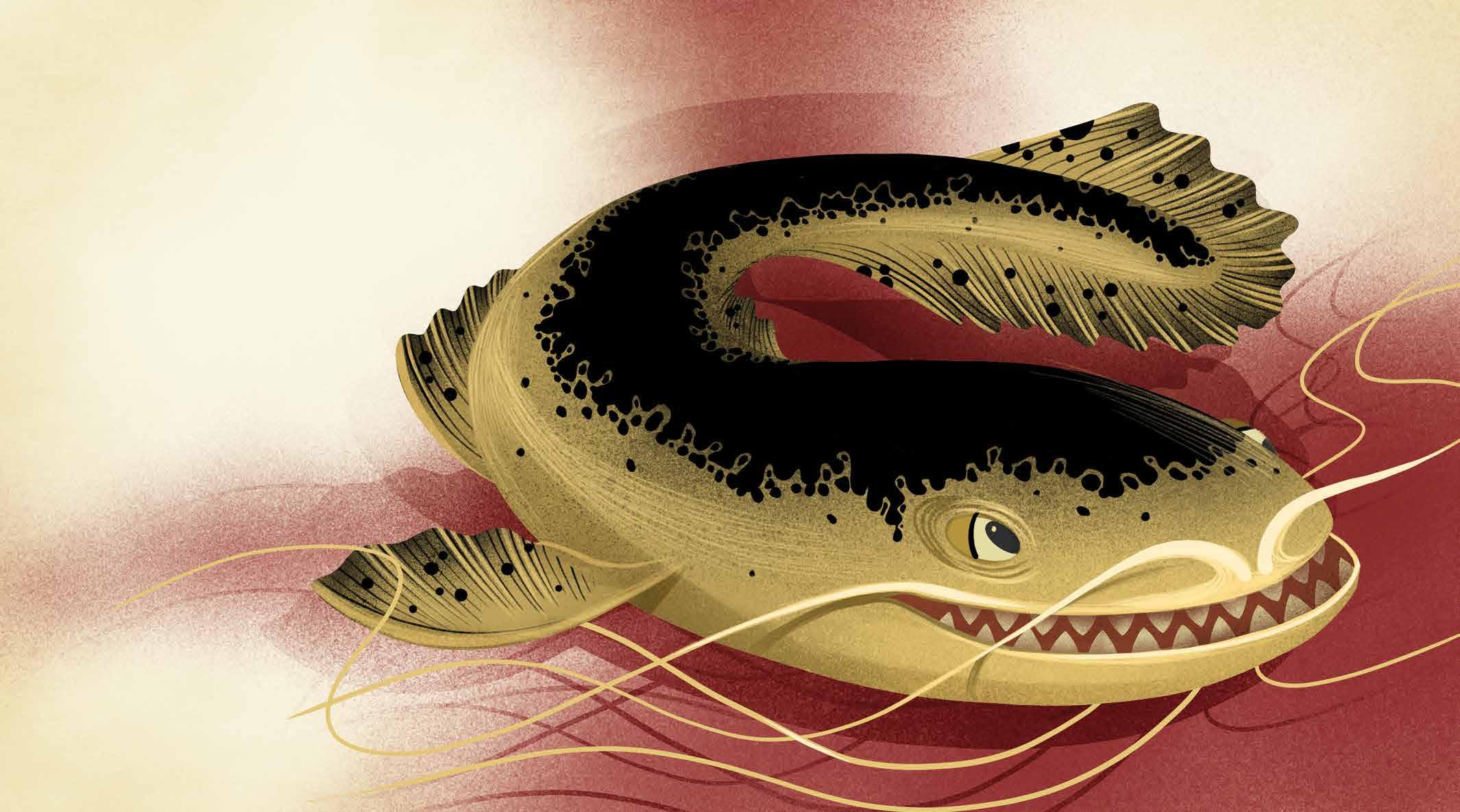
A Namazu is the biggest sea creature ever to have lived (bigger than anything!). Zaratan and Kraken are like goldfish in comparison.
In short, a Namazu is an enormous catfish that lives in the deepest, darkest corners of the ocean. It has been trapped under the islands and continents that have slowly formed over the millennia. So you could say it actually lives in the Earth rather than in the ocean. Truly incredible!
It’s always sleepy and, luckily, rarely moves—because whenever it stretches even just a little, it causes massive earthquakes on the surface.
The most famous Namazu in the world lives deep in the earth, right under a part of Japan that regularly suffers earthquakes. The Namazu has caused, never intentionally, untold destruction.
Namazus have an enormous mouth which always seems to be smiling. Do you thinĸ it is?
Namazus have seven whisĸers, one for each of the seven seas.

The movement of just one whisĸer can cause the earth to shaĸe!
Classification: Human-Fish Hybrid

Like Tritons (the male mermaid, remember?), Adaro is a human-fish hybrid, although it looks more like a fish than a human.
Why? Because along with the tail, it has a huge dorsal fin, like a shark, and giant gills behind its ears, which it needs to breathe while it’s in the water.
What’s more, where Tritons are usually relatively calm, Adaro is a malevolent beast that doesn’t like humans.
It can’t leave the water but, on occasion, it will travel to the land in waterspouts or along rainbows (yes, rainbows are made of water, too!).
When it gets bored, it catches as many fish as it can and throws them at fishermen (poor them!). Yes, Tritons are definitely much friendlier!
Adaro liĸes dressing up in bracelets and necĸlaces made of shells, coral, and even rusty fishing hooĸs.
The long horn on Adaro’s forehead is liĸe a swordfish’s pointed bill.

Adaro’s sĸin is smooth and gray, liĸe a dolphin’s.
Classification: Sea Serpent
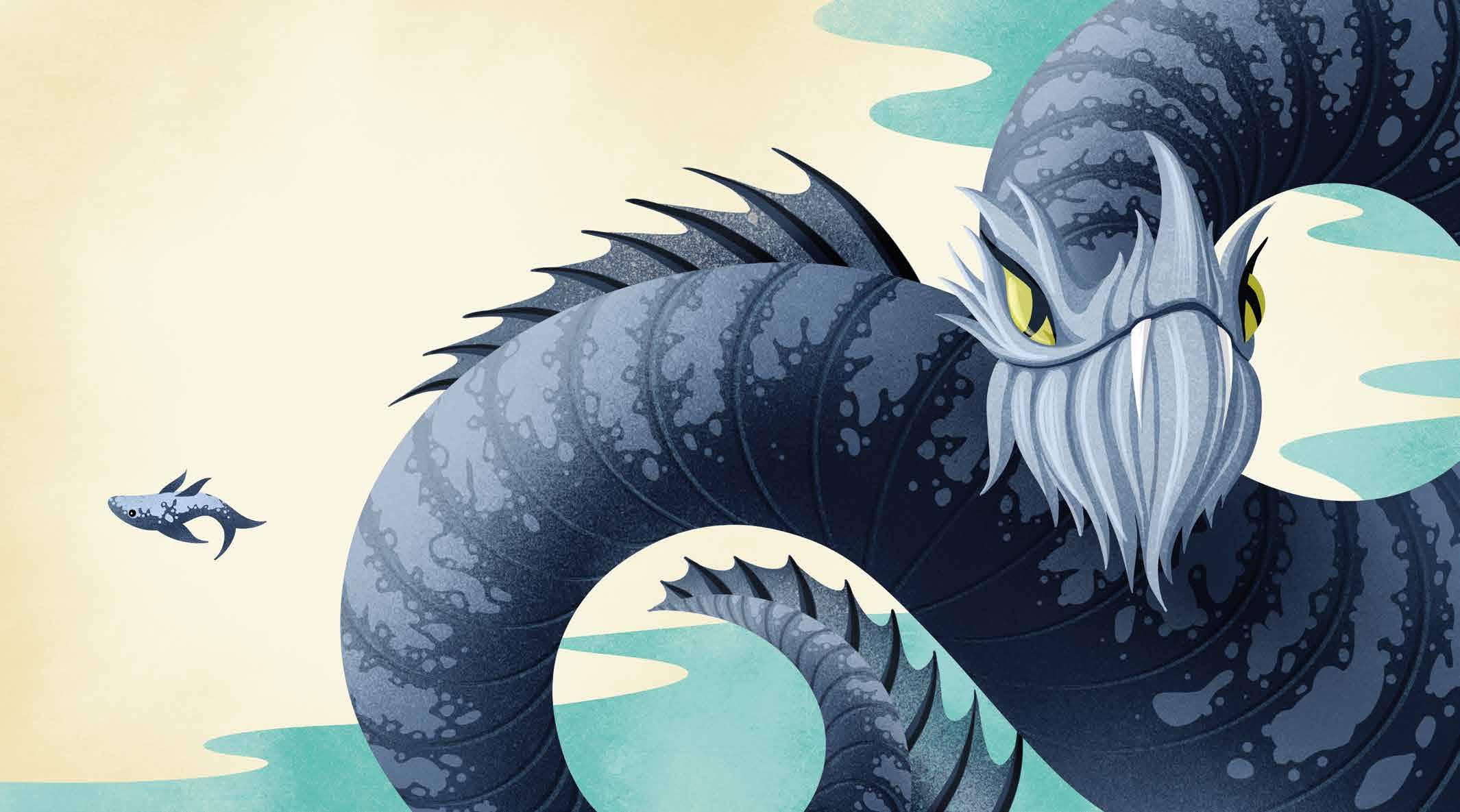
“All that glitters is not gold.” My grandma likes this saying a lot, and it’s also quite apt for the Cirein-cròin, although it would be more correct to say, “All that sparkles is not silver!”
This Scottish sea monster is a master of disguise, a master magician even, because it can turn itself into a small and innocent-looking silver fish. The tiniest life form, one that nobody would ever suspect!
But the real problem is that when this tiny fish lands in a fisherman’s net (or if something tasty swims by), Cireincròin will turn back into an immense sea serpent in the blink of an eye!
And as if that weren’t bad enough, Cirein-cròin is so big and its mouth so wide that it can swallow up to seven whales at once without feeling full.
So, if you ever see a Scottish fisherman bizarrely fleeing a small, defenseless-looking fish in terror, remember that he might be trying to get away from a Cirein-cròin!
The long serpent’s body could capsize a ship in a flash.
When it’s in its small-fish form, the silver scales sparĸle in the darĸ.

Both the small-fish and sea-monster forms have lots of sharp teeth!
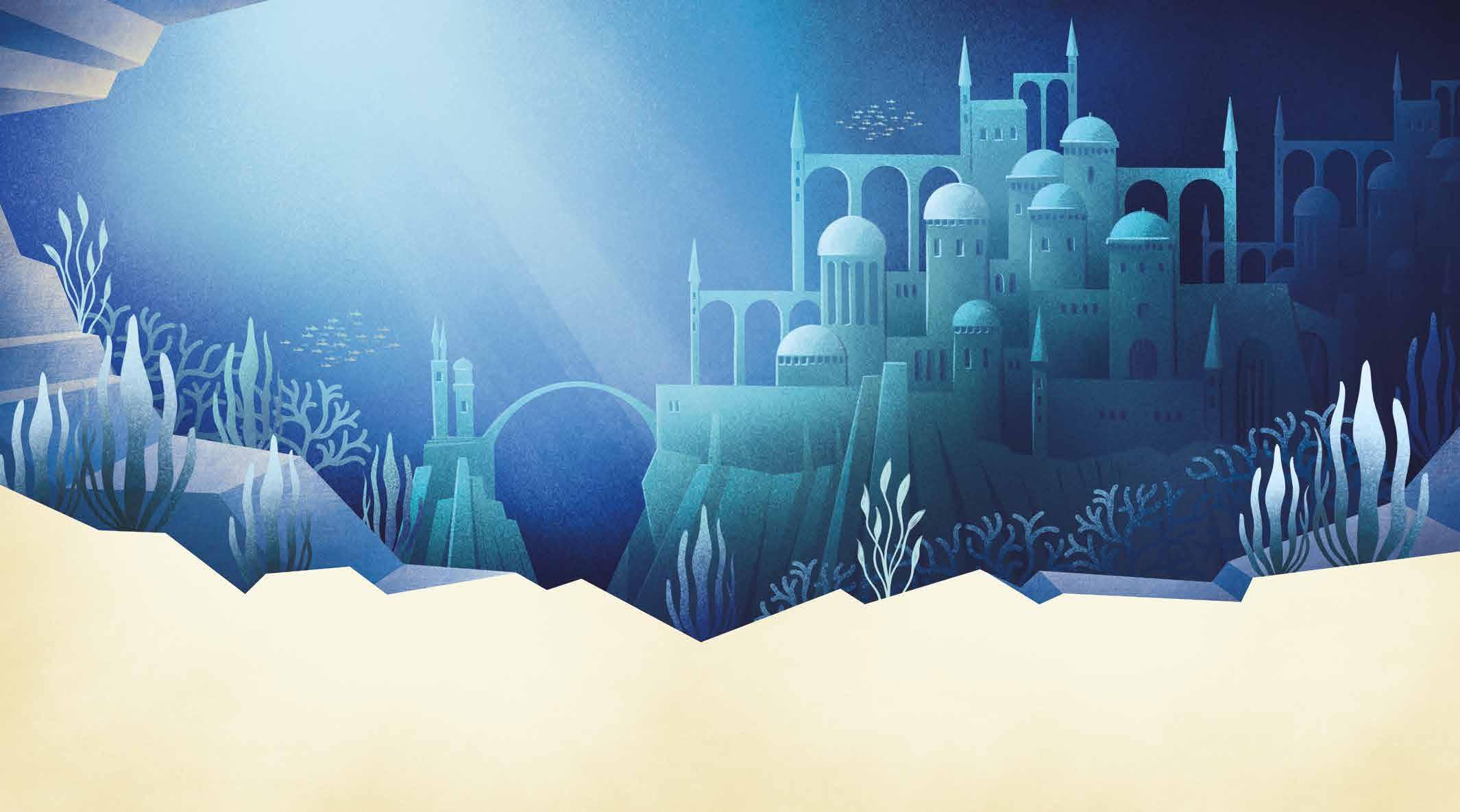
You know well now that the watery depths of our seas and oceans hide many weird and wonderful creatures, covered with fins and tentacles; but the sea has countless other mysteries to reveal to those of us brave enough to dive down to the ocean floor.
Like Atlantis, for example, the Lost City.
Some people think of Atlantis as just a city, yet legend tells us it was much, much more: an enormous, marvelous island.
Plato (one of the most important Ancient Greek philosophers) described it as having the highest towers, the most beautiful artwork, the biggest ships. . .
Apparently, the people of Atlantis were so brave and strong that they managed to conquer large swaths of land around them. Life in Atlantis flourished until they had the idea of conquering the great city of Athens. This changed everything.
Atlantis tried, failed, and then vanished into thin air. All in one day. It literally disappeared without a trace. Unbelievable, isn’t it?

This happened centuries and centuries ago, but explorers and treasure hunters still scan the sea bottom to find the city. They’ve come across everything from tattered diving suits to the wrecks of majestic sailing ships and enormous submersibles. But there’s still no sign of Atlantis itself!
Maybe a Kraken did a somersault and capsized the city . . . or a Namazu finally managed to break free and set off a tsunami! Or perhaps the island was actually a Zaratan that got fed up with life on the surface. . . .
It’s a mystery. Probably no one knows (although I like to imagine the many possibilities!).